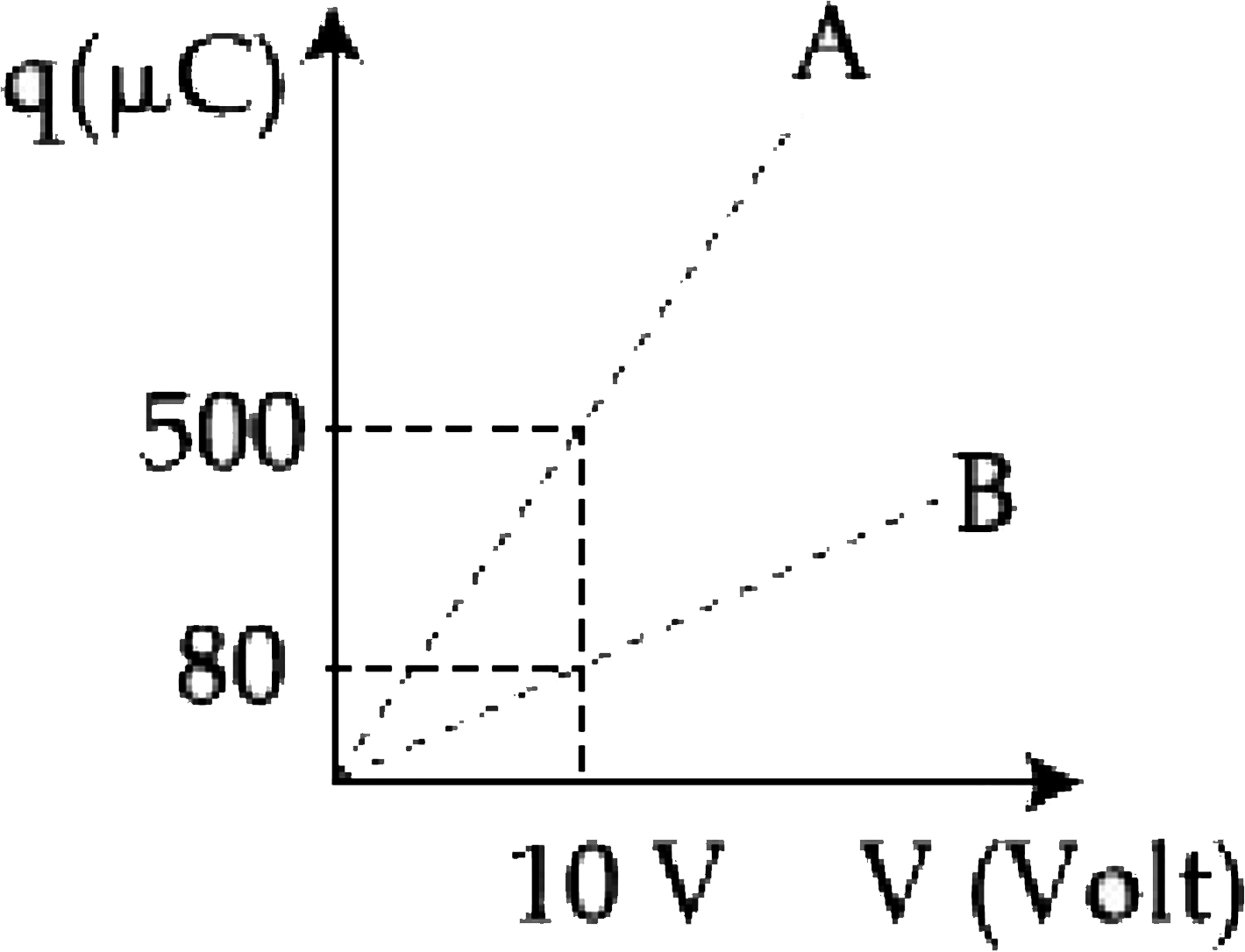Combination of two identical capacitors, a resistor R and a dc voltage source of voltage 6V is used in an experiment on a (C−R) circuit. It is found that for a parallel combination of the capacitor the time in which the voltage of the fully charged combinatiomn reduces to half its original voltage is 10 second. For series combination the time needed for reducing teh voltage of the fully charged series combination by half is-
20s
10s
5s
2.5s
The correct Answer is:D
To solve the problem, we need to determine the time required for the voltage of a fully charged series combination of two identical capacitors to reduce to half its original value, given that the time for the parallel combination is 10 seconds.
1. Understanding the Time Constant for Parallel Combination:
- For the parallel combination of capacitors, the equivalent capacitance CP is given by:
CP=C+C=2C
- The time constant TP for the parallel combination is:
TP=R⋅CP=R⋅2C
- The time required for the voltage to reduce to half its original value (half-life) is given by:
t1/2=TP⋅ln(2)=2RC⋅ln(2)
- We know from the problem that this time is 10 seconds:
2RC⋅ln(2)=10 seconds
2. Understanding the Time Constant for Series Combination:
- For the series combination of capacitors, the equivalent capacitance CS is given by:
CS=C⋅CC+C=C2
- The time constant TS for the series combination is:
TS=R⋅CS=R⋅C2
- The time required for the voltage to reduce to half its original value is:
t1/2=TS⋅ln(2)=(R⋅C2)⋅ln(2)
3. Finding the Relationship Between TS and TP:
- We can express TS in terms of TP:
TS=14TP
- Since TP=2RC, we have:
TS=14⋅2RC=RC2
4. Calculating the Half-Life for Series Combination:
- Now substituting TS into the equation for half-life:
t1/2=TS⋅ln(2)=(RC2)⋅ln(2)
- From the parallel case, we know:
2RC⋅ln(2)=10 seconds
- Therefore:
RC⋅ln(2)=5 seconds
- Substituting this into the series half-life equation:
t1/2=(52)=2.5 seconds
Final Answer:
The time needed for reducing the voltage of the fully charged series combination by half is 2.5 seconds.
- For the parallel combination of capacitors, the equivalent capacitance CP is given by:
CP=C+C=2C
- The time constant TP for the parallel combination is:
TP=R⋅CP=R⋅2C
- The time required for the voltage to reduce to half its original value (half-life) is given by:
t1/2=TP⋅ln(2)=2RC⋅ln(2)
- We know from the problem that this time is 10 seconds:
2RC⋅ln(2)=10 seconds
- For the series combination of capacitors, the equivalent capacitance CS is given by:
CS=C⋅CC+C=C2
- The time constant TS for the series combination is:
TS=R⋅CS=R⋅C2
- The time required for the voltage to reduce to half its original value is:
t1/2=TS⋅ln(2)=(R⋅C2)⋅ln(2)
- We can express TS in terms of TP:
TS=14TP
- Since TP=2RC, we have:
TS=14⋅2RC=RC2
- Now substituting TS into the equation for half-life:
t1/2=TS⋅ln(2)=(RC2)⋅ln(2)
- From the parallel case, we know:
2RC⋅ln(2)=10 seconds
- Therefore:
RC⋅ln(2)=5 seconds
- Substituting this into the series half-life equation:
t1/2=(52)=2.5 seconds
The time needed for reducing the voltage of the fully charged series combination by half is 2.5 seconds.
Topper's Solved these Questions
- BOOK - VMC MODULES ENGLISHCHAPTER - CAPACITORSEXERCISE - JEE Advance ( Archive ) LEVEL 21videos
CAPACITORS
- BOOK - VMC MODULES ENGLISHCHAPTER - CAPACITORSEXERCISE - JEE Advance ( Archive ) LEVEL 31videos
CAPACITORS
- BOOK - VMC MODULES ENGLISHCHAPTER - CAPACITORSEXERCISE - LEVEL 240videos
CAPACITORS
- BOOK - VMC MODULES ENGLISHCHAPTER - BASIC MATHEMATICS & VECTORSEXERCISE - Impeccable50videos
BASIC MATHEMATICS & VECTORS
- BOOK - VMC MODULES ENGLISHCHAPTER - CURRENT ELECTRICITYEXERCISE - IN-CHAPTER EXERCISE-F10videos
CURRENT ELECTRICITY
Similar Questions
Figure shows charge (q) versus voltage (V) graph for series and parallel combination of two given capacitors.The capacitances are :
 View Solution
View SolutionThe ratio of energy stored by the series combination of two idential capacitors to their parallel combination , when connected to same supply voltage, is
View Solution
Knowledge Check
- Question 1 - Select One
A sinusoidal voltage of rms value 220 V is applied to a diode and a resistor R in the circuit shown in figure so that half wave rectification occurs. If the diode is ideal, what is the rms voltage across R1?
 A55√2 VB110 VC110√2 VD220√2 V
A55√2 VB110 VC110√2 VD220√2 V
If the capacitors in the previous question are joined in parallel,the capacitance and the breakdown voltage of the combination will be
View SolutionA sinusoidal voltage Vsin(at) is applied across a series combination of resistance R and inductor L. The amplitude of the current in the circuit is
View SolutionA 6 V, 12 W lamp is connected in series with a resistor R and a source of voltage 12 V.
What is the current flowing through the circuit?View SolutionA capacitor, a resistor and a 40 mH inductor are connected in series to an a.c. source of frequency 60 Hz. Calculate the capacitance of the capacitor,if current is in phase with the voltage.
View SolutionA 6 V, 12 W lamp is connected in series with a resistor R and a source of voltage 12 V.
What is the purpose of the resistor R?View SolutionAn ac source of 50 V (r.m.s value) is connected across a series R - C circuit. If the r.m.s voltage across the resistor is 40 V, then the r.m.s voltage across the capacitor is
View SolutionIn an L-C-R circuit the AC voltage across R, L and C comes out as 10 V , 10 V and 20 V respectively . The voltage across the enter combination will be
View Solution

